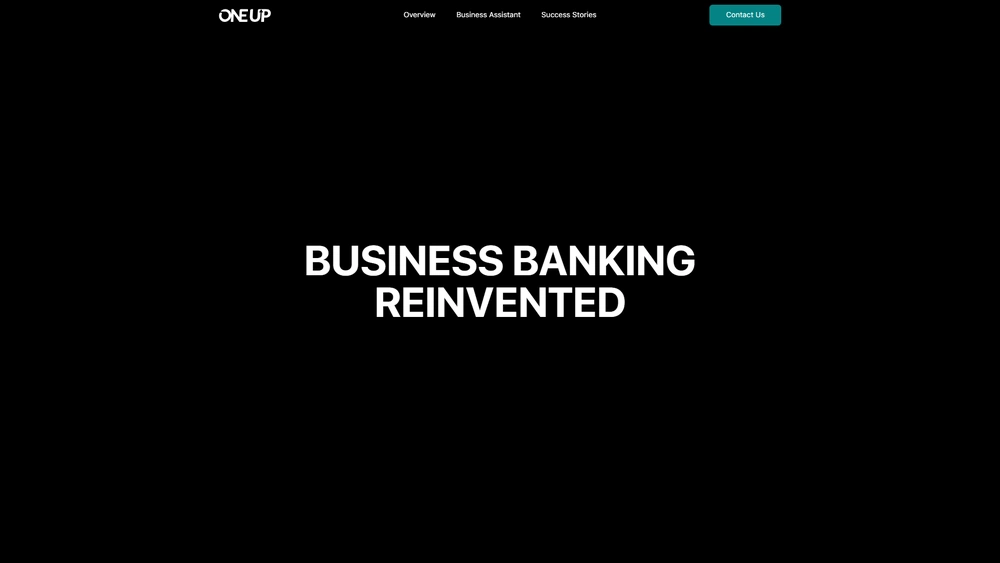OneUp Overview & 2025 Industry Position
OneUp is a cloud-based accounting and small business management platform designed to automate core financial processes such as invoicing, inventory tracking, CRM, and more. In 2025, businesses continue to seek streamlined platforms that reduce manual data entry, provide real-time financial snapshots, and integrate seamlessly with other tools. OneUp delivers on these fronts by offering an all-in-one system with smart automation, competitive pricing, and ease of use that appeals particularly to startups, freelancers, small businesses, and inventory-focused firms. Positioned between legacy accounting suites and modern financial dashboards, OneUp has carved a space for users who want control without complexity—especially in markets where multilingual and VAT-friendly capabilities are mandatory.
From Launch to 2025: OneUp’s Journey
Originally launched in France in 2010 under the name « Zencraft », the platform evolved quickly after initial traction with European SMBs. By 2013, the company rebranded to OneUp to reflect its global ambitions. Its US launch followed in 2015 with a tightly integrated banking and accounting interface. In 2017, machine-learning transaction categorization was introduced, making OneUp among the earliest accounting tools with predictive AI capabilities. Mobile-first redesigns followed in 2019 and were instrumental during the 2020 work-from-home shift.
By 2023, OneUp had grown into a full-featured suite supporting order management, CRM pipelines, accounting dashboards, and multi-language invoicing. Heading into 2025, the brand focuses on cost efficiency, AI-led automation, and niche market expansion (such as drop-shippers and VAT-driven e-shops).

OneUp Key Features
OneUp’s major feature set revolves around automation, real-time tracking, and unified business operations. Here’s what stands out in 2025:
- AI-powered bookkeeping: Automatically records transactions from connected bank accounts.
- CRM integration: Track leads, follow-ups, and conversions directly from the platform.
- Inventory control: Accurate stock management with sales-purchase syncing.
- VAT and tax support: Supports multiple VAT rates and formats for compliance in the EU and globally.
- Multi-currency & language: Ideal for cross-border businesses operating in French, English, Spanish, and more.
- One-click invoicing: PDF generation, auto-send, and overdue reminders.
- Mobile-first design: Native mobile apps sync instantly with desktop activity.
Workflow & UX
Setup is guided and intuitive, with a clean interface that eliminates clutter while preserving function. Once you connect your bank account, OneUp categorizes transactions on its own. The learning curve for non-accountants is lower than most competitors due to built-in tutorials and “next suggestion” prompts.
The navigation menus are sidebar-driven, with quick tabs for CRM, invoices, reports, and banking. Users can batch reconcile transactions, preview invoices before sending, and switch seamlessly between vendors and product modules.
The mobile experience mirrors desktop design, ensuring no loss of functionality on the go. This consistency makes switching from device to device friction-free.
OneUp Pricing Analysis & Value Metrics
| Plan | Monthly Price | Users | Main Features |
|---|---|---|---|
| Self | $9/mo | 1 | Basic bookkeeping, invoicing, banking |
| Pro | $19/mo | 2 | Inventory, CRM, sales pipeline |
| Plus | $29/mo | 5 | Advanced reporting, quotes, team roles |
| Team | $39/mo | 10 | Multi-user management, VAT modules, support |
Value Overview: OneUp is one of the most competitively priced platforms in its category, offering robust functionality even at the entry-level tier. Plans scale by user count and features, all without hidden costs.
Competitive Landscape
| Platform | Best For | Strength | Pricing |
|---|---|---|---|
| OneUp | Inventory-focused SMBs | Automation + Mobility | $9–$39/mo |
| QuickBooks Online | U.S. firms | Banking rules & reporting | $30–$90/mo |
| Zoho Books | Tech-savvy SMEs | Ecosystem integrations | $0–$70/mo |
| Wave | Freelancers | Free core features | $0 + paid add-ons |
| Xero | Cross-border firms | Global support + plug-ins | $15–$78/mo |
Use Cases
OneUp thrives in highly operational small businesses—those who need to manage product-based transactions, client relations, and multi-step quotes. Key verticals include:
- Wholesalers and drop-shippers managing stock and sales invoices.
- Freelancers needing streamlined banking reconciliation.
- Field service technicians issuing mobile invoices on-site.
- E-commerce sellers syncing sales with VAT tracking tools.
OneUp Integrations
OneUp connects with major platforms to enable seamless operations:
- Bank feeds: U.S. and European financial institutions.
- E-commerce: WooCommerce, Shopify via Zapier modules.
- CRM: Built-in module + optional Gmail sync.
- Tax tools: VAT MOSS/pre-formatted exports.
- Cloud storage: Google Drive, Dropbox for receipt capture.
Pros & Cons
- ✅ Automated bookkeeping saves hours per month
- ✅ Built-in CRM beats most standalone small CRMs
- ✅ Affordable, no recurring hidden fees
- ❌ Limited U.S.-specific tax forms (e.g., 1099)
- ❌ No direct payroll functions
- ❌ Support response times can lag on weekends
Pro Tip: Set up a recurring invoice schedule to automate client billing and reduce end-of-month delays.
Final Thoughts
For small businesses prioritizing automation, mobility, and simplicity, OneUp delivers outstanding value across operations. Its lean design and minimal learning curve make it ideal for entrepreneurs tired of overcomplicated accounting apps. However, businesses needing formal payroll systems or intensive reporting might find OneUp limited. Still, it remains one of 2025’s top tools for growing firms wanting unified tools without ERP bulk.
OneUp FAQ
Yes. OneUp simplifies workflows and offers guided onboarding, making it accessible for first-time business owners.
Yes. OneUp provides comprehensive VAT handling including multi-rate settings, MOSS filing exports, and VAT-inclusive pricing tools.
Yes. Through Zapier or manual import options, OneUp can sync sales data with platforms like Shopify or WooCommerce.
OneUp is ideal for SMBs in retail, wholesale, services, and professional trades—especially those managing inventory or customer leads.
No. As of 2025, OneUp does not offer native payroll functionality, but data can be exported for use with third-party payroll tools.